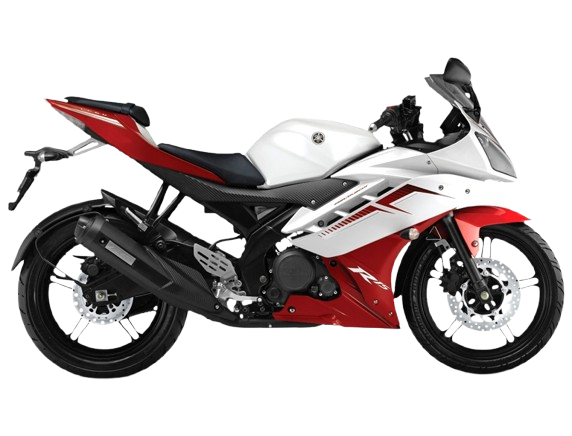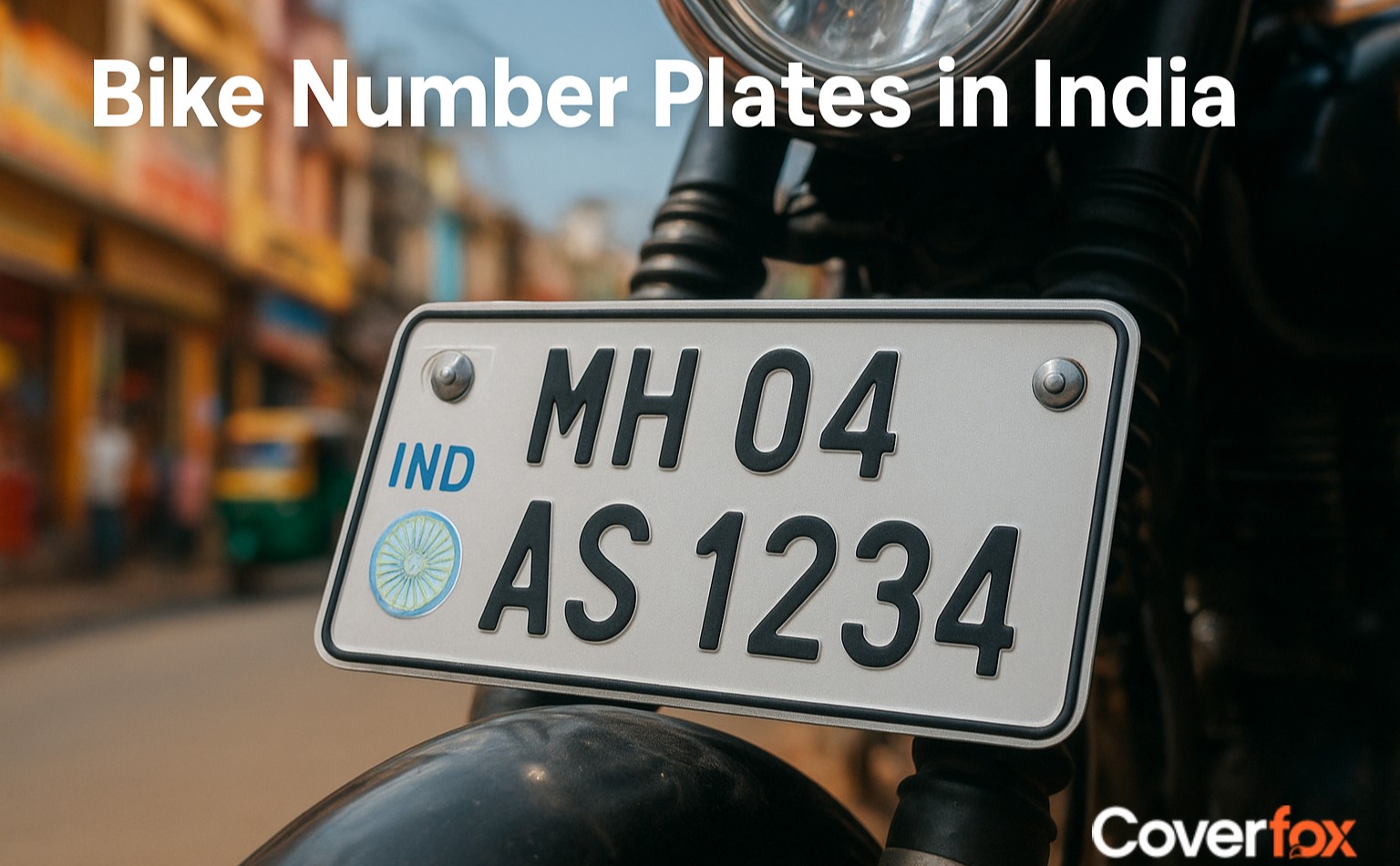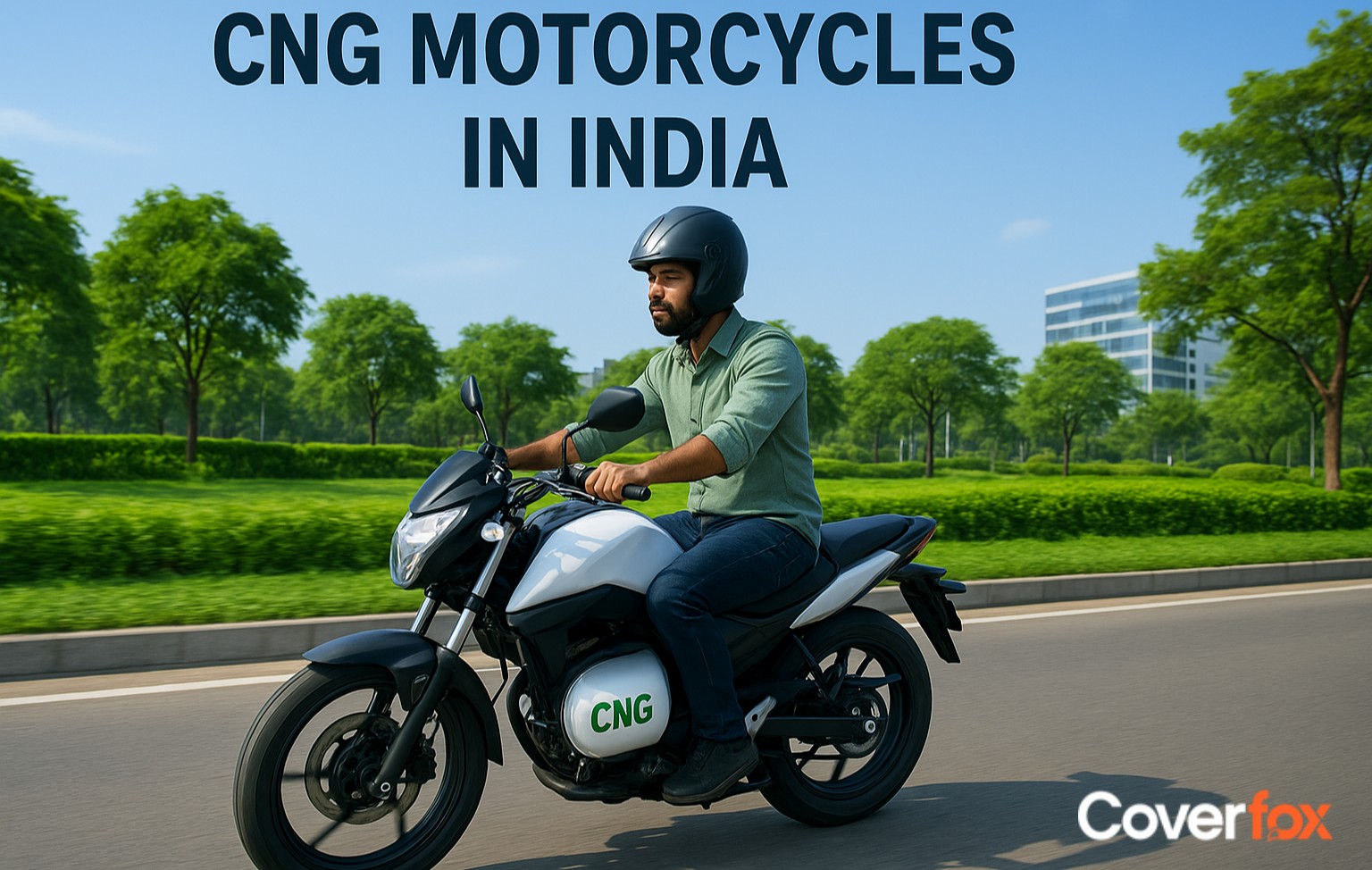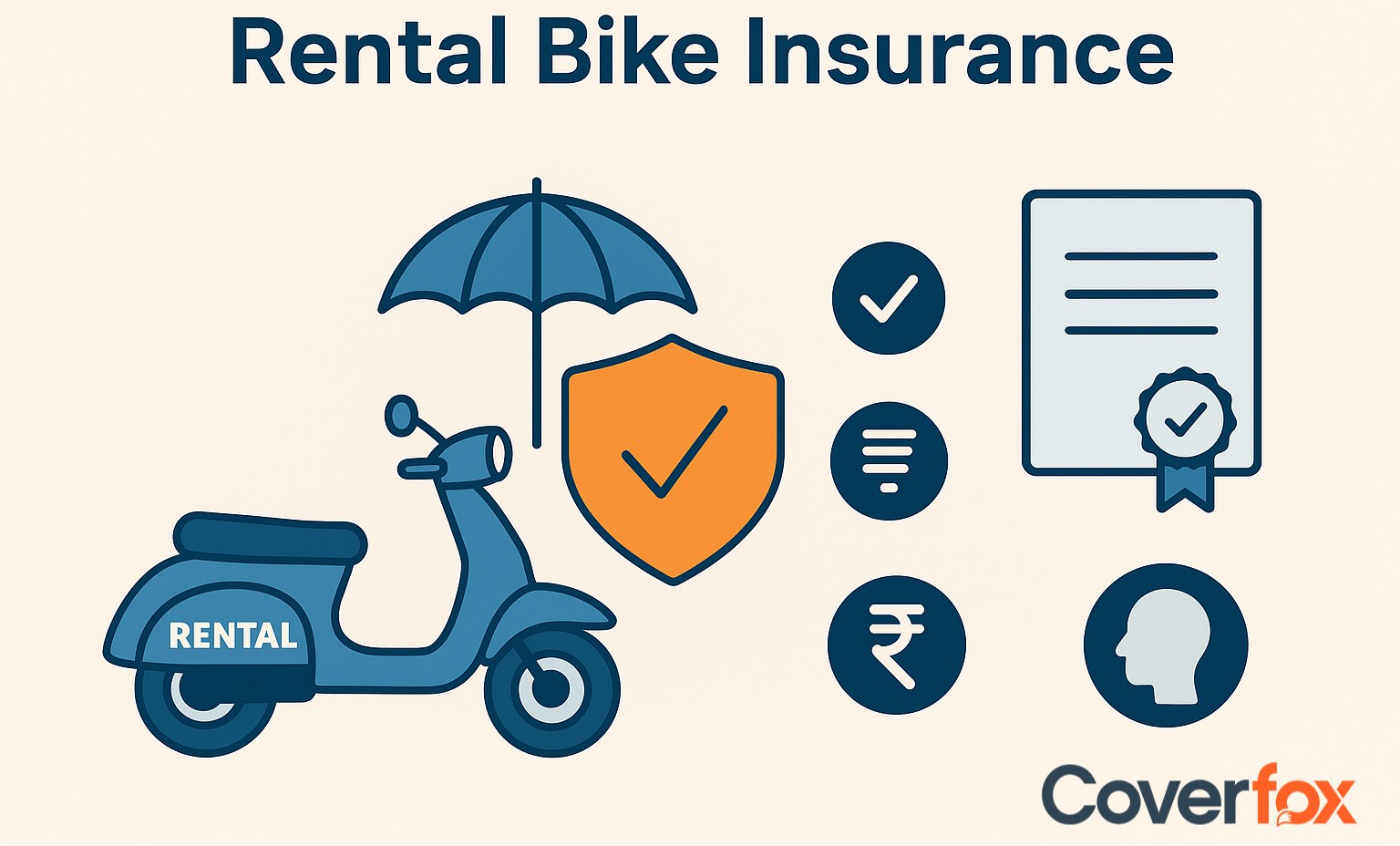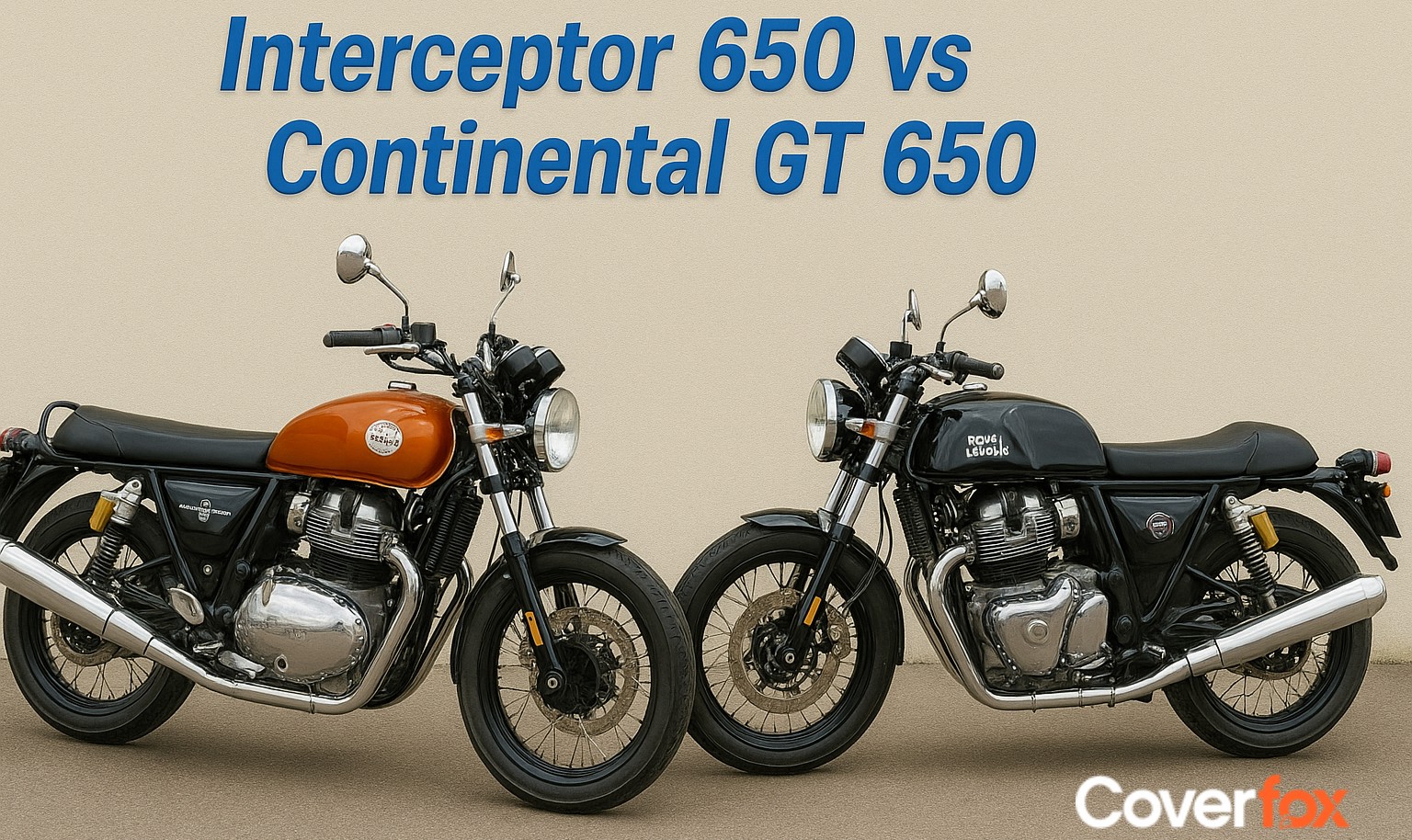Riding a motorcycle or scooter can be thrilling, but it comes with its own set of risks. To reduce this risk, it's important to ensure your safety. A helmet is one of the most crucial pieces of gear for riding safely.
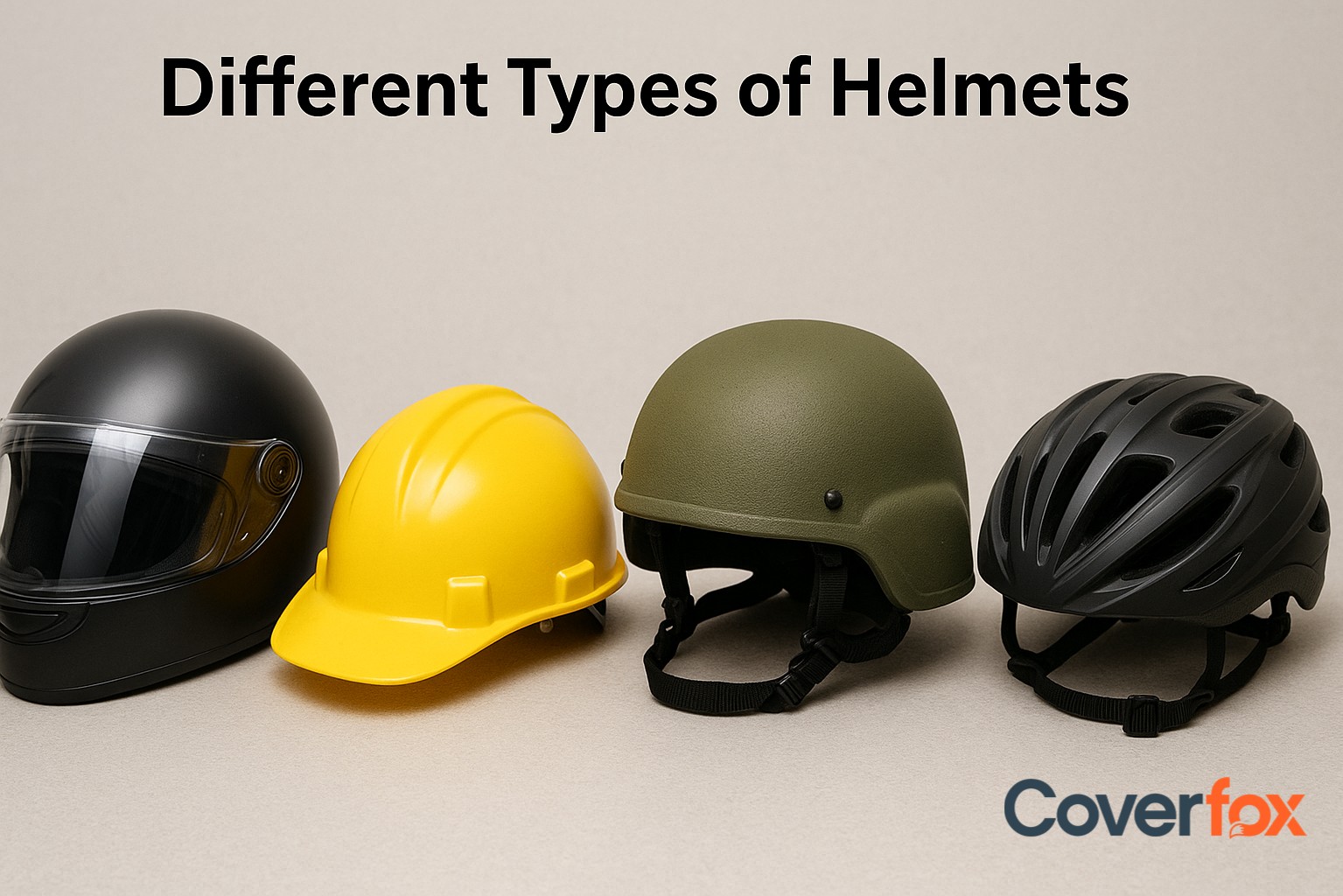
It’s a rider’s first line of defence, designed to protect the head and reduce the impact of accidents. According to the World Health Organization (WHO) Global Status Report on Road [Safety, wearing a standard, properly fitted helmet can reduce the risk of death by around 40% and the risk of serious head injury by over 70%. Not all helmets are the same, and choosing the right type can make a significant difference in comfort, safety, and performance.
Some helmets sold in India carry foreign safety certifications such as DOT or ECE. However, for legal road use in India, helmets must carry an ISI certification under BIS IS 4151 standards. Using only foreign-certified helmets without the ISI mark can attract fines. This article explores the various kinds of helmets, their purposes, and what to consider when choosing one, which helps you to ride smarter and safer.
Overview of Helmet Components
When it comes to vehicle safety, a helmet is your ultimate safeguard on every ride. It is a security headgear designed to protect the head during accidents. Its effectiveness depends on the careful combination of several components, each serving a specific function. You need to understand these components to help you select the right helmet for your safety, comfort, and usability.
According to the Bureau of Indian Standards (BIS), the protective efficiency of a helmet depends not just on its shell but also on the energy-absorbing liner and chin-strap strength. Always check the ISI mark inside the helmet before purchasing.
Outer Shell
Impact-Absorbing Liner
Comfort Padding
Retention System
Optional Features
The outer shell is the hard exterior layer of the helmet, which protects your head against sturdy objects and spreads the force of impact over a wider area. It is typically made from materials like polycarbonate, fibreglass, or composite to maintain strength and durability.
The impact-absorbing liner lies under the outer shell. It is usually made of expanded polystyrene (EPS) foam. This layer compresses upon impact and reduces the energy transferred to the skull and brain.
Comfort padding offers cushioning, security and a comfortable fit for the wearer. It also helps to control moisture and can be removable or adjustable for hygiene and a customised fit.
The retention system consists of straps and a buckle, which keep the helmet firmly in place during movement or an accident. You need to adjust this system properly to ensure safety.
Some helmets include additional features such as ventilation channels, sun visors, anti-fog liners, or communication systems. Though these features are optional, they can enhance comfort, convenience, and usability.
Types of Helmets & Their Details
The best helmet depends on your riding style, speed, and weather conditions. For instance, daily commuters may prefer lightweight open-face designs, while highway or sportbike riders should choose full-face models for superior impact protection. Choosing the right helmet is crucial for rider safety, comfort, and performance.
Helmets vary in design, coverage, features, and price, catering to different riding styles and conditions. Understanding the types of helmets available helps riders make informed decisions to protect themselves while enhancing their riding experience.
1. Full-Face Helmet
Full-face helmets are also known as Integral Helmets. It provides complete coverage for the head, including the chin and jaw. They are smartly designed to offer maximum protection, reduce wind noise, and shield the rider from debris, which makes them ideal for high-speed riding and long-distance touring.
- Maximum Coverage
- Common Features
- Price Range
- Best For
- Pros
- Cons
Full-face helmets protect the entire head, including the face and jaw, offering the highest level of safety among all helmet types.
These helmets come with a built-in visor to protect the eyes, an aerodynamic shell design to reduce wind drag, a ventilation system to keep the rider comfortable, removable and washable inner padding, and sometimes compatibility with Bluetooth or communication systems.
The price of full-face helmets typically ranges from ₹3,000 to ₹50,000+, depending on the brand, material quality, and additional features offered.
Full-face helmets are best suited for highway riders, sportbike enthusiasts, long-distance touring, or anyone who prioritises maximum safety and protection.
Full-face helmets provide complete head and facial protection, reduce wind noise, shield the rider from debris, and feature aerodynamic designs for stability at high speeds. They also often include comfortable ventilation and removable liners.
These helmets can feel heavier and warmer than other types, are less convenient for quick stops or communication, and are usually more expensive compared to half or open-face helmets.
2. Modular Helmet
Modular helmets, also known as Flip-Up Helmets, combine the protection of a full-face helmet with the convenience of an open-face design. The chin bar and visor can be lifted, allowing riders to communicate, eat, or drink without removing the helmet entirely. They are popular among touring riders and those who prefer flexibility without compromising safety.
- Maximum Coverage
- Common Features
- Price Range
- Best For
- Pros
- Cons
Modular helmets provide full-face coverage when the chin bar is closed, which protects the head, face, and jaw. It provides an option to open the front area for ventilation.
These helmets feature a flip-up chin bar, built-in visor for eye protection, advanced ventilation systems, removable and washable inner padding, and some models support Bluetooth or communication device integration.
Modular helmets generally range from ₹6,000 to ₹60,000+, depending on brand, material, and additional features.
They are ideal for touring riders, commuters, and those who want the flexibility of switching between full-face protection and an open-face experience during rides.
Modular helmets offer the protection of a full-face helmet while allowing easy access to the face for communication, eating, or drinking. They are comfortable for long rides, feature good ventilation, and often come with removable liners and integrated technology options.
Modular helmets tend to be heavier than standard full-face helmets, may have slightly less rigidity due to the hinge mechanism, and are usually more expensive than comparable full-face or open-face helmets.
3. Open-Face Helmet
Open-face helmets are known as 3/4 Helmets. They cover the top, sides, and back of the head but leave the face and chin exposed. They are designed for riders who prefer a wider field of vision, better airflow, and lighter weight while still offering basic head protection. These helmets are commonly used for city commuting and casual riding.
- Maximum Coverage
- Common Features
- Price Range
- Best For
- Pros
- Cons
Open-face helmets protect the top, sides, and back of the head but do not cover the chin or face, providing moderate safety compared to full-face helmets.
They include a built-in visor or face shield for eye protection, ventilation systems for comfort, removable and washable inner padding, and some models allow for Bluetooth or communication device integration.
The price typically ranges from ₹2,500 to ₹20,000+, depending on brand, materials, and additional features.
Open-face helmets are best suited for city riders, scooter and cruiser users, and anyone seeking comfort, better visibility, and ease of use for short to medium rides.
Open-face helmets are lightweight, offer excellent ventilation, provide a wider field of vision, and are comfortable for city and casual riding. They are also easier to wear and remove compared to full-face helmets.
They offer less protection for the face and chin, may expose the rider to wind, dust, and debris, and are not ideal for high-speed or long-distance rides.
4. Half Helmet
Half helmets, also called Brain Buckets, cover only the top portion of the head, leaving the face, jaw, and sides largely exposed. They are made for riders who prioritise lightweight comfort, minimal coverage, and freedom of movement. These helmets are commonly used for short city rides or cruiser motorcycles.
- Maximum Coverage
- Common Features
- Price Range
- Best For
- Pros
- Cons
Half helmets protect only the top of the head, providing minimal coverage compared to other helmet types.
They usually include basic padding for comfort, a simple chin strap, and occasionally a small visor for sun protection. Ventilation is naturally high due to the open design, but most models do not include advanced features like Bluetooth integration.
Half helmets generally range from ₹1,500 to ₹10,000+, depending on brand and material quality.
They are ideal for city riders, scooter users, and those who prefer lightweight helmets or short rides in urban areas.
Half helmets are extremely lightweight, comfortable, and provide excellent airflow. They are easy to put on and remove, making them convenient for quick rides.
They offer minimal protection, leaving the face and jaw exposed, are unsuitable for high-speed or long-distance rides, and may not meet all safety standards in some regions.
5. Off-Road Helmet
Off-road helmets are recognised as Motocross Helmets. They are specifically built for dirt biking, motocross, and other off-road riding activities. They provide the highest protection against impacts, debris, and rough terrain, while allowing excellent ventilation and visibility for high-intensity riding conditions.
- Maximum Coverage
- Common Features
- Price Range
- Best For
- Pros
- Cons
Off-road helmets cover the entire head and feature an extended chin bar for extra protection, though they often lack a built-in face shield. Riders usually wear separate goggles for eye protection.
These helmets include a long, angled visor to block sunlight and debris, multiple air vents for enhanced airflow, a lightweight yet strong shell, removable and washable padding, and a design optimised for compatibility with goggles.
Off-road helmets typically range from ₹5,000 to ₹45,000+, depending on brand, materials, and additional features.
They are ideal for adventure riders, touring enthusiasts, and anyone who frequently rides on both paved roads and off-road trails.
Dual sport helmets provide full-face protection while offering the versatility and ventilation needed for off-road riding. They are comfortable for long rides, lightweight compared to traditional off-road helmets, and often include modern features like removable liners and communication system compatibility.
They are generally heavier than standard full-face helmets, can be more expensive, and may compromise slightly on aerodynamics compared to dedicated on-road helmets.
6. Bluetooth/Smart Helmet
Bluetooth or Smart helmets are advanced helmets equipped with integrated technology for communication, navigation, and entertainment. They allow riders to connect to smartphones, GPS devices, or other riders via Bluetooth, providing hands-free calls, music streaming, and turn-by-turn navigation while riding. These helmets are ideal for tech-savvy and touring riders.
- Maximum Coverage
- Common Features
- Price Range
- Best For
- Pros
- Cons
Bluetooth helmets typically offer full-face or modular coverage, protecting the entire head, face, and jaw, while incorporating technology without compromising safety.
They include built-in Bluetooth speakers and microphones, voice command functionality, navigation prompts, call handling, music streaming, removable and washable padding, aerodynamic designs, and sometimes integration with helmet cameras.
Bluetooth helmets usually range from ₹7,000 to ₹70,000+, depending on brand, technology features, and material quality.
These helmets are ideal for touring riders, long-distance commuters, tech-savvy riders, and anyone who wants hands-free connectivity while riding.
Bluetooth helmets provide full protection while allowing hands-free communication and entertainment. They enhance convenience with navigation support, improve safety by reducing phone handling, and often feature removable liners and good ventilation.
They are heavier than standard helmets, more expensive due to integrated technology, and require battery charging for Bluetooth functions.
7. Lightweight Urban/Commuter Helmets
Lightweight Urban/Commuter Helmets are constructed for daily city commuting and short rides, which prioritise comfort, ventilation, and ease of use. They are lighter than full-face or touring helmets, making them ideal for slow-moving traffic and frequent use.
- Maximum Coverage
- Common Features
- Price Range
- Best For
- Pros
- Cons
These helmets usually offer half-face or open-face coverage, protecting the top, sides, and back of the head while keeping the face exposed for better visibility and airflow.
They feature lightweight shell construction, excellent ventilation, removable and washable liners, adjustable straps, reflective elements for enhanced visibility, and sometimes small visors to shield against the sun.
Lightweight urban helmets generally range from ₹1,500 to ₹6,000, depending on brand, material, and added features.
These helmets are suitable for city commuters, short-distance riders, casual cyclists, and anyone prioritising comfort and convenience over full-face protection.
Lightweight Urban/Commuter Helmets are comfortable for daily use, provide good ventilation for city riding, are easy to wear and remove, and often come at a budget-friendly price with basic safety features.
They offer less protection for the face and jaw compared to full-face helmets, are not ideal for high-speed or long-distance rides, and may lack advanced features like Bluetooth connectivity or integrated sun visors.
8. Dual-Sport Helmet
Dual sport helmets are referred to as Adventure Helmets. They are designed to combine the features of both full-face and off-road helmets. They offer versatile protection for both on-road and off-road riding, which makes them ideal for adventure touring and riders who often switch between roads and rough terrain.
- Maximum Coverage
- Common Features
- Price Range
- Best For
- Pros
- Cons
Dual sport helmets cover the entire head, the chin and jaw, similar to full-face helmets and also provide the extended visor and ventilation typical of off-road helmets.
These helmets include a built-in visor or peak, a removable face shield for road use, excellent ventilation for off-road conditions, removable and washable padding, and some models support Bluetooth or communication devices.
Dual sport helmets generally range from ₹8,000 to ₹70,000+, depending on brand, materials, and additional features.
They are ideal for adventure riders, touring enthusiasts, and anyone who frequently rides on both paved roads and off-road trails.
Dual sport helmets provide full-face protection while offering the versatility and ventilation needed for off-road riding. They are comfortable for long rides, lightweight compared to traditional off-road helmets, and often include modern features like removable liners and communication system compatibility.
They are generally heavier than standard full-face helmets, can be more expensive, and may compromise slightly on aerodynamics compared to dedicated on-road helmets.
Helmet Safety Certifications in India
Helmet safety certifications ensure that helmets meet specific quality, impact resistance, and safety standards to protect riders effectively during accidents. In India, ISI-certified helmets are mandatory under Rule 138(4)(f) of the Central Motor Vehicle Rules (CMVR). Other international certifications such as DOT, ECE, and SNELL provide additional assurance of safety but do not replace the ISI requirement for Indian roads. Riding with a helmet that is not ISI-certified is illegal and can attract fines. Certified helmets help riders choose helmets that have been tested for safety and reliability and ensure compliance with traffic laws.
ISI (Indian Standards Institute) Certification
DOT (Department of Transportation) Certification
ECE (Economic Commission for Europe) Certification
SNELL Certification
SHARP (Safety Helmet Assessment and Rating Program)
FIM Certification
The Indian Standards Institute (ISI) mark, governed by the Bureau of Indian Standards (BIS), certifies that the helmet meets Indian safety norms for impact absorption, retention strength, and penetration resistance.
DOT certification (FMVSS 218) is issued by the U.S. Department of Transportation and is recognized globally for meeting minimum safety performance levels.
The Economic Commission for Europe (ECE) 22.06 standard is one of the most stringent helmet testing benchmarks worldwide, covering multiple impact points and rotational acceleration.
SNELL-certified helmets meet the Snell Memorial Foundation standards, which are more rigorous than ISI or DOT. They are primarily used in racing and motorsport helmets.
SHARP is a UK-based rating system that provides star ratings based on extensive crash testing and performance evaluation of helmets.
Helmets certified by Fédération Internationale de Motocyclisme (FIM) meet standards for professional racing, including advanced impact testing and high-speed performance. This list helps riders identify helmets that comply with legal requirements and offer reliable protection on Indian roads.
Choosing the Right Helmet
The right helmet not only protects your head but also improves comfort, visibility, and endurance on long rides. Consider the following aspects before you buy one. Selecting the right helmet is crucial for rider safety, comfort, and performance. A wisely chosen helmet not only secures your head in case of accidents but also enhances visibility, reduces fatigue, and ensures a comfortable ride. Choosing a helmet involves considering safety certifications, fit, type, material, and additional features.
Check Safety Certifications
Ensure Proper Fit
Choose the Right Helmet Type
Consider Helmet Material
Check Ventilation and Comfort
Look for Visibility and Optics
Evaluate Additional Features
Replace Old or Damaged Helmets
Always buy helmets that carry the ISI mark (BIS IS 4151). Certifications like DOT, ECE, or SNELL can offer added protection but are not a legal substitute for ISI in India.
The helmet should fit snugly without being too tight. Measure your head circumference and try different sizes to find the best fit.
Select the helmet type that suits your riding style—full-face, modular, open-face, off-road, or dual-sport.
Helmets made from high-quality materials like polycarbonate, fibreglass, or carbon fibre offer better protection and durability.
Adequate airflow, padding, and weight distribution are important for long rides to reduce heat buildup and fatigue.
Clear visors, anti-fog coatings, and wide fields of vision improve safety, especially during night or rainy conditions.
Features like removable liners, sun visors, Bluetooth integration, and reflective elements can enhance convenience and safety.
Even certified helmets should be replaced after significant impact, visible damage, or after 3–5 years of use. This guide ensures riders make informed decisions when selecting a helmet, balancing safety, comfort, and functionality.
Helmet Maintenance Tips
To ensure longevity, performance, and safety, it's important to properly maintain your helmet. Regular care keeps the helmet clean, functional, and comfortable while ensuring that its protective properties are not compromised. By following simple maintenance practices, riders can maximise the life of their helmet and maintain optimal protection on the road.
Clean the Outer Shell Regularly
Clean the Inner Liner and Padding
Check the Straps and Buckles
Avoid Dropping the Helmet
Store Properly
Avoid Modifying the Helmet
Replace After Impact or Ageing
Keep Visor and Vents Clean
Use mild soap and water to clean the helmet exterior. Avoid harsh chemicals that can weaken the helmet’s material.
Remove and wash the inner liner and padding according to the manufacturer's instructions to prevent odour, sweat buildup, and bacterial growth.
Regularly inspect chin straps and buckles for wear or damage and ensure they function properly to maintain a secure fit.
Handle the helmet with care, as impacts can compromise its protective integrity even if no visible damage is present.
Keep the helmet in a cool, dry place away from direct sunlight or extreme temperatures. Use a helmet bag or cover to protect it from dust and scratches.
Do not drill, paint, or make unauthorised modifications, as this can reduce the helmet’s protective ability.
Replace the helmet immediately after a crash or if it shows signs of wear, damage, or if it is over 3–5 years old, even without visible damage.
Clean the visor with a soft cloth and ensure vents are free of debris to maintain clear visibility and proper airflow.
Expert Tip: Even if a helmet looks intact, microscopic damage from drops or age can reduce protection. Manufacturers and the BIS recommend replacing helmets every 3–5 years or after any significant impact.
Conclusion
Wearing a certified helmet is the single most effective way to prevent severe head injuries and fatalities in two wheeler accidents. Whether you’re a daily commuter or an adventure rider, always choose an ISI-marked helmet, ensure the right fit, and maintain it regularly. Various types of helmets exist, which include full-face, modular, open-face, half, off-road, dual-sport, Bluetooth/smart, lightweight urban, and budget-certified helmets, each particularly designed to offer specific protection and features.
Choosing the right helmet involves checking certifications, ensuring a proper fit, selecting the appropriate type, and maintaining it correctly. Along with safety gear, having bike insurance provides financial protection in case of accidents or theft, complementing your physical safety measures.
Read More:
Frequently Asked Questions
How many types of helmets are there?
There are several types of helmets available, like full-face, modular, open-face, half, off-road, dual-sport, Bluetooth/smart, and budget-certified helmets.
Which type of helmet is best?
Full-face helmets are best as they usually provide the highest level of protection.
Are half helmets safe for regular use?
Half helmets provide minimal protection and are suitable only for short, low-speed rides.
Can I use an off-road helmet for street riding?
Yes, but they may be less comfortable and noisier on roads.
Are Bluetooth helmets safe and legal?
Yes, if Bluetooth helmets have the required safety certifications like ISI, DOT, or ECE, then they are safe.
How often should a helmet be replaced?
Replace a helmet after any major impact or every 3–5 years.
Can I wear a bicycle helmet on a motorised two-wheeler?
No, bicycle helmets are not meant to be used for motorised vehicles as they don't meet that level of safety standards.
